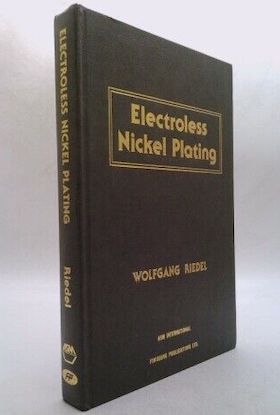
-----
Pre-treatment for cast iron substrates in EN plating
September 9, 2009
Q. Dear Sir,
I am a master student studying Electroless Ni-B plating on sphero cast iron substrates. My problem is with the pretreatment process. I really researched about these steps but I think still I have some problems which I can not understand why.
I am doing the pretreatment process like following which I've taken from Riedel's EN plating book.
1. alkaline cleaning (80 C, 5 min)
rinsing
2. anodic electrocleaning
rinsing
3. pickling (dilute acid)
rinsing
4. anodic electrocleaning
rinsing
5. pickling
rinsing
6. EN plating
but in the books there are no details about the cleaning solutions' components and compositions. I found some information about these steps from different sources and did my cleaning process according to it. but I couldn't get the results I wanted. at the end of the process my surface was not clean, on the contrary some regional fade-outs had been occurred.
I want to know if there is any source which I can find the detailed pretreatment process for cast iron substrates and for EN plating of course.
I'll be very glad in the presence of any of your help...
- Istanbul, Turkey
A. Don't reinvent the wheel.
Talk to plating industry vendors about their products and procedures, but not their formulas. Proprietary works a lot better than home brew. Your second pickle needs to be an activate step rather than a pickle or you will very probably get smut formed.
Note that you may find a vendor that will give you a small amount of the chemicals and an operations sheet for each if you will put the names of his products in your final paper.
It is worth a try.
Get the library to get an inter library loan of a proper reference book. There are lots of recommended books that you can find from this site's start page.
PS if it is porous cast, you will have lots of problems.
- Navarre, Florida
September 10, 2009
Q. The problem occurs in the pickling step. Smut is formed when immersed in the acid and after it can be said that all the surface becomes black...
I will try reducing the immersion time and/or acid weakening the solution when I have enough substrates.
But at this point I want to ask something else, while immersing the material.. what kind of wire should be used.. ? I am asking this because I use copper wire and in pickling step I also have problem with copper wire I think...
I think that stainless steel would be a better choice but I couldn't have tried it yet.. It must also be conductor due to the anodic cleaning step...
- Istannbul, Turkey
September 28, 2009
A. I strongly prefer brass wires/rods as an optimum trade off of price, strength, current capability, amount of attack on the wire and polluting the baths.
James Watts- Navarre, Florida
September 29, 2009
A. I prefer plain carbon steel rods or wires. They contaminate the least and after the first load become plated so they stop contaminating. Obviously they pull some nickel but IMO this is normally not a problem .
Guillermo MarrufoMonterrey, NL, Mexico
October 6, 2009
Q, A, or Comment on THIS thread -or- Start a NEW Thread

